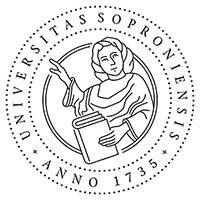Fostering Second Language Competencies with Multicultural Children Literature
Abstract
Due to the civil right movements and immigration in the United States, significant changes in society and educational policies took place during the past decades. As a result, 40 % of public school students come from minority cultures, and 10% has limited English proficiencies. Research indicates that their academic success is greatly influenced by their reading, comprehension and cultural competencies in the new language. This paper argues that multicultural children literature has the potential to effectively foster English language learners ’ competencies. The paper also presents tips for assessing and selecting authentic multicultural literature. Finally, it offers teaching strategies for a selection of multicultural children books to be successfully used with English language learners in elementary and middle schools.
References
Altman, L. (1993): Amelia’s road. Lee & Low, New York.
Atwell, N. (1984): Writing and reading literature from the inside out. Language Arts. 61, 240–252.
Busching, B. (1981): Reader’s theater: An education for language and life. Language Arts, 58. 330–338.
Calderón, M. (2007): Gear up ELL plus: Reading Program for K-3. Wright Group/McGraw Hill, Chicago, Ill.
Carpenter, L. M. (2000): Multiethnic children’s literature: It’s need for a permanent place in the children’s literary canon. (Report NO. CS 217 099). Biola University, La
Mirada, CA. (ERIC Document Reproduction Service No. ED441240).
Cummins, J. (1981): The role of primary language development in promoting educational success for language minority children. In: California State Department of Education (Ed.), Schooling and language minority students: A theoretical framework. California State University, Los Angeles. (3–49).
Cunningham, T. H.-Graham, C. R. (2000): Increasing native English vocabulary recognition through Spanish immersion: Cognate transfer from foreign to first language. Journal of Educational Psychology, 92/1. 37–49. doi: https://doi.org/10.1037/0022-0663.92.1.37
Cummins, J. (1984): Language proficiency, bilingualism and academic achievement. In: P.A. Richard-Amato, Making it happen: Interaction in second language classroom from theory to practice. (1996). Addison-Wesley, White Plains, NY.
Derrick, J. (2008): Using comics with ESL/EFL students. http://iteslj.org/Techniques/Derrick-UsingComics .html.. [2010.5.12]
Foglesong Guy, G. (1996): Fiesta! Greenwillow Books, New York.
Foglesong Guy, G. (2005): Siesta. Greenwillow Books, New York.
Foglesong Guy, G. (2007): My grandma. Mi Abuelita. HarperCollins Publishers, New York.
Hodgkinson, H. (2002): Demographics and teacher education. Journal of Teacher Education, 53/2. 102–105. doi: https://doi.org/10.1177/0022487102053002002
Krashen, S-Terrell, T. (1983): The natural approach: Language acquisition in the classroom. The Alemany Press, San Francisco, CA
McCallister, C. (2004): Schooling and the possible self. In: Curriculum Inquiry, 34/4. 425–461. doi: https://doi.org/10.1111/j.1467-873X.2004.00305.x
Mobin-Uddin, A. (2005): My name is Bilal. Boyd Mills Press, Honesdale, PA.
NCES. Executive summary. National report card: 2009. http://nces.ed.gov/nationsreportcard/pubs/main2009/2010458.asp#section2 /.[2010. 05. 3.]
Ogle, D. (1986): A teaching model that develops active reading of expository text. The reading teachers, 39. 564–570.
Rosenblatt, L. (1984): Literature and exploration. (3rd ed.) Modem Language Association, New York.
Short, K. G.-Fox, D. L. (2003): The sociopolitical contexts of cultural authenticity. National Council of Teachers of English, Urbana, IL.
SSS Sunshine state standards, Language arts, Kindergarten, Florida Department of Education. http://www.floridastandards.org/Standards/FLStandardSearch.aspx.[2010. 05. 02.]
Yule, G. (2006): The study of language (3rd ed.). Cambridge University Press, New York.
Villegas, A.-Lucas, T. (2002): Educating culturally responsive teachers. A coherent approach. SUNY Press, Albany, NY.
Winter, J.(2008): Wangari’s trees of peace. Harcourt, Orlando.
Downloads
Published
Issue
Section
License
Copyright (c) 2009 Szécsi Tünde

This work is licensed under a Creative Commons Attribution-NonCommercial-NoDerivatives 4.0 International License.








